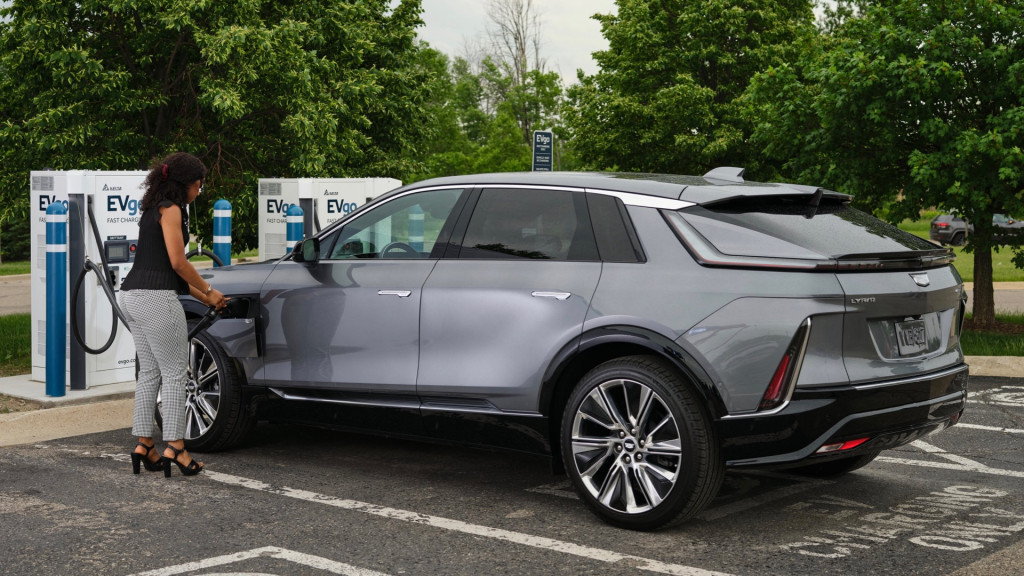Federal officials are discussing ways to ensure cybersecurity for EV charging infrastructure, as the government pushes for a national charging network.
The Office of the National Cyber Director (ONCD) hosted a forum last week with government officials and various EV stakeholders, including automakers and charging equipment manufacturers, according to a White House release first spotted by Axios.
The meeting wasn't convened to counter a specific known threat, but rather focused on the possibility of cybersecurity standards for EV charging hardware, and research into potential risks, according to the release. It's not even clear, based on the meeting, which government agency would be in charge of issuing cybersecurity standards for EV charging.

2023 Cadillac Lyriq at EVgo DC fast-charging station.
Chargers could represent a security vulnerability because they're interconnected with home and business networks. Researchers have documented some potential vulnerabilities that could inhibit charging, but charger hacks have been largely hypothetical so far, Axios pointed out.
As a report from earlier this year suggested, one of the most obvious EV charger vulnerability targets for hackers might be fleets, where they could disrupt nightly charging of delivery vehicles—a bit like malware might disrupt other functions.
In addition to concerns over EV charger vulnerability, there's been much discussion about how at risk cars themselves are to hackers.

Tesla charging (Courtesy of Tesla, Inc.)
Tesla has challenged hackers to find vulnerabilities in its software in the past. And in 2016, a group of white-hat hackers from China did just that, uncovering a flaw that Tesla duly fixed with a software update.
A growing group of EVs has the capability for over-the-air (OTA) software updates—or even to remedy issues that have software roots—that Tesla pioneered. That makes it easier to disseminate cybersecurity fixes, but also creates a point of entry for hackers via the car's connection to a network.












